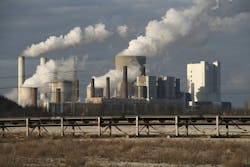New GE technology helps power plants meet EPA wastewater discharge rules
ORLANDO — Nov. 17, 2015 — GE is offering a new evaporation/solidification system specifically designed for treating flue gas desulfurization (FGD) wastewater, according to a press release.
The technology can treat FGD wastewater from any type of coal and removes the risk of failing to meet stringent discharge requirements by eliminating liquid discharge to waterways, noted the release. It is designed to reduce chemical addition, sludge handling and energy costs, while also reducing the long-term environmental risks associated with the discharge of FGD purge water and other liquid streams from power plants.
The system is designed to produce high-quality water for recycling and reuse, reported the release.
According to GE, its new technology meets the latest U.S. Environmental Protection Agency (EPA) guidelines governing wastewater discharge from steam electric and coal-fired power plants.
The EPA’s effluent limitation guidelines aim to reduce or eliminate toxic metals and other pollutants from entering surface waters from steam electric power plants, stated the release. The rules specifically address FGD wastewater from coal-fired power plants and identify chemical precipitation followed by biological treatment as the best available technology for treating and discharging the waste from existing plants and evaporation/pozzolanic solidification for new facilities.
In addition, the EPA guidelines identify evaporation/solidification as a best available technology for eliminating FGD waste streams from existing power plants under a voluntary incentive program, shared the release.
Under the new rules, power plants can either treat and discharge their wastewater or eliminate it with an evaporation system. Each facility must comply between 2018 and 2023, depending on when a new Clean Water Act permit is needed.
You can find the entire release here.
